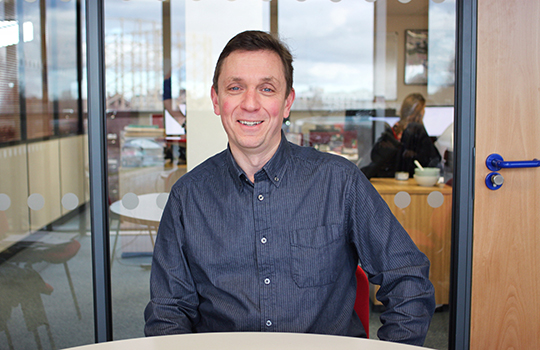What’s stopping you appointing a Patient Director?
I know you are struggling to keep your organisation’s head above water. I know the demands of the system and the seemingly inescapable tide of pressures—the demographics, the “expectations,” the limited capacity, the desire to uphold and even improve quality and safety. The money. The money.
I know you want to “put patients at the centre.” I know you do all you can to ensure you gather patient experience data, set up involvement groups, “involve” people in decisions, satisfy the seemingly voracious “demands” of the “the public.” The media. The money.
I know you have a patient and public involvement lead over there, reporting somehow to the Board. I know you have a patient experience team over here. Both sets of people up to their neck in trying to “engage” and influence upwards—to put patients on an equal footing.
Back at the “coalface,” your clinicians are shifting towards believing in, and supporting, shared decision making. Trying to encourage supported self management and linking up with health and well being initiatives in the community.
So, why not take the next step?
In all parts of the country, the patient movement is growing. There are “patient entrepreneurs” inventing apps and social entrepreneurs, community development activists, people with “lived experience” gathering in pathway redesign meetings, moving beyond just “telling their stories”—staying in the room to reframe problems and come up with new insights and angles; using the wisdom they have gained through suffering—wanting not to shout or merely have a “voice” any more. But to be true partners.
And you want to do “integration,” be up there with the Vanguards, keep abreast of the agenda from STPs, and somewhere in your heart, you know that it is patients—those who know about fragmentation, lack of consistency and coordination—who could be the glue that provides the ammunition for peace. They could help stop the warring partners fighting over who needs “control” of the system. Maybe it’s time to let go a little?
You have begun to realise perhaps that the old way of doing engagement does not work—feedback mechanisms that don’t focus on what matters, or fail to have impact, and focus group reports that sit on the shelf. You are tired of hearing about committees where a “rep” bangs on the same drum month after month. You may even notice that it is the very structures you have that are preserving an unnecessary status quo—that keep a “them and us” that situates people perennially on the circumference rather than “at the centre.”
And yet at the same time, you are distrustful that any one patient can “represent” others (isn’t that what a Patient Director does, big time?) and are beginning to wonder if there is a way out of this self-fulfilling and vicious cycle—poor ways of doing engagement don’t work, so why bother at all. Let’s keep the façade and get on with the real work, every day service delivery, maintaining quality, governance, improvement… The money. The money.
So, take a look at what we’ve done in Sussex MSK Partnership, where I am Patient Director. When the CCGs put out a contract for a partnership to oversee the entire musculoskeletal pathway and to make sure “patients are in control” through an emphasis on supported self-management and shared decision making, they went the step further—they appointed a Patient Director at executive level.
The Patient Director “represents” nobody, not even themselves. They are there to ensure that there is a culture and systems that embed “patient partnerships” in everyday business. We are there (I have an equivalent in the Eastern partnership, Anne Sabine) to model the relationships at executive team level that should be shared throughout the culture of the organisation. We are there to broker opportunities for patients at all levels—at corporate and pathway governance level; in improvement work; in training; in induction; in values and vision work. And more…
It is not perfect. We are still learning and evolving. But the early signs are good. On each of our three CQUIN projects for 2016/17, patient partners contributed to design and delivery of work on pain services redesign, shared decision making, and patient-centred outcomes. We have eight supported, trained, and valued partners who will meet next month to decide how to move forward and how to bring along others—and how to link to the two hundred patients who have volunteered to be “more involved.”
These patient partners are becoming a fixture whenever quality or safety is discussed—they are not “reps” and they do not displace other engagement or patient experience work—but they are supposed to be in the room when decisions are made—the aim is to share power. And the joy is seeing clinicians, non-clinicians, and patient partners in the room together exploring why they hold different views, going beneath the surface, checking their own and each other’s assumptions, being vulnerable, staying at the table for difficult discussions (The money. The money) and coming up with new ways of doing things.
This year’s CQUIN includes a piece of work to support non-clinical staff to improve patients’ experiences. And the team that will do the work will include all of us—patients, receptionists, administrators, clinicians, etc. That is why I have kept going through dark times this year—this is why I hold onto the light. There is a heart and a mind and a wisdom to this work that I have seldom seen in thirty years of “doing” involvement.
I would say this wouldn’t I, but I do not believe we would be where we are in just two years of a new partnership, trying to transform and deliver services for a catchment population of three-quarters of a million population, if there was not a Patient Director. Someone who could help oversee the various strands of patient-centred work and broker these sorts of opportunities.
It all adds up: need for new engagement approaches + valuing patients for what they bring + creating opportunities + supporting people …. ++++ patient director = a better way of doing things that can help heal the healthcare system.
So, what’s stopping you?
Let me know, and I’d be happy to help and I’m sure our fellow patient partners would too.
David Gilbert, Patient Director, Sussex MSK Partnership (Central). This blog was written in a personal capacity.
Competing interests: None further declared.
David writes at futurepatientblog.com and can be found on Twitter at @DavidGilbert43.

